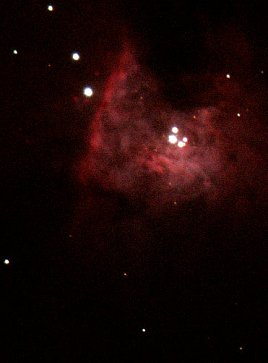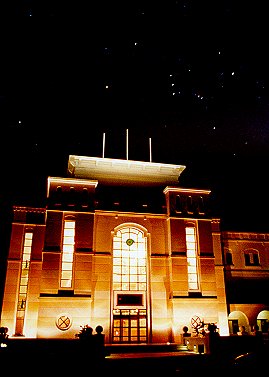
Next below is a close-up
of Orion, 60 sec exposure, 50 mm lens at f2.8, camera mounted piggy-back on a
telescope tracking in alt azimuth mode, to better "freeze" the drift of the
stars. Orion is supposed to be a hunter, here with his head towards the left-top
corner (the small cluster of 3 stars), belt made of 3 stars in a straight line
in the middle (almost vertical line in the picture below, sword made up of
the 3 stars that are at about 45 degrees and then legs
below. 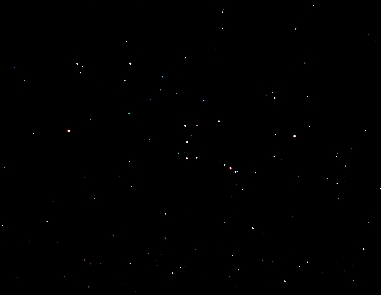
Sky map of Orion follows below, note that the map
shows Orion standing up (i.e. rotated compared to the photo above). It is
interesting that the formal astronomical names of the brightest stars are Arabic
from centuries ago (perhaps it's all those Ramadhan nights in the desert?). The
imagination has wavered over the centuries and while Rigel (=foot in Arabic) is
still a foot in modern sketches, Saiph (=sword in Arabic. Not sure whether it
refers to Saif Hinai or Saif al Harthy!) is often taken as the other leg in
Western sketches. Some of the other names are readily identifiable with modern
Arabic (Alnitak=Belt, Mintaka=Region, Betelgeuse=Beit al Ghuss?) but what
is Alnilam or Bellatrix?! Deciphering Bellatrix looks as much of a challenge as
realising that Gibraltar started out as Jebel Tariq or that the River
Guadalkivir in Spain started off as Wadi al Kabir! Would be most
interesting to see a modern Arabic star atlas, if anyone out there has
one...Later I found out that Betelgeuse = Yad al-Jauza = Hand of Orion, and
Alnilam = Al Nidham = String of Pearls
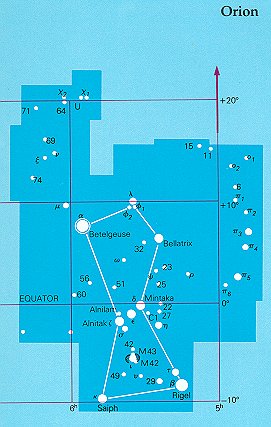
It is interesting that
many people, like myself, do not really see the colours of stars, they all seem
bright yellow, but to prove that they are coloured, strongly, the photo below
was taken for a minute with the lens set at infinity, then defocused for 30
seconds. The colours of Betelgeuse and Rigel are now obvious. Betelgeuse is a
red giant star. If we could see infrared it would be the brightest star in the
sky. Rigel is a much hotter, younger star, blue hot. Please also note the blue
hot stars of the belt of Orion. Let us now zero in on the 3 "stars" that
constitute the modern "sword" of Orion. In particular note the tiny, fuzzy, red
region of M42 and M43.
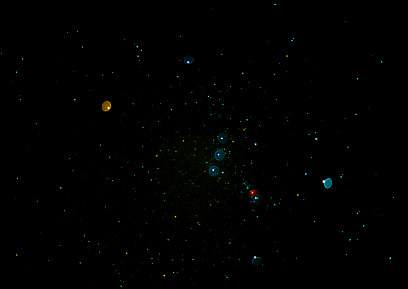
Below is a close-up of
this region. It is the magnificent Orion Nebula. In fact we note that the 3
stars are not 3 at all, more like 3 clusters. The longer the photo exposure, the
more stars we see. This photo was taken using an 8" SCT at f/6.3 for one minute.
The telescope was unguided but was tracking in alt azimuth mode. The 3 "stars"
from the above photo (Orion's sword) are rotated to vertical (as in the map) and
span the picture below. The nebula is a gas cloud 1500 light years from us (some
14000 trillion kilometers!) but still just next door in astronomical terms. It
is still in our galaxy (the Milky Way), just a tiny fraction of the diameter of
our galaxy away from us, and stars are still being formed by the gas condensing
under gravitational pull. The nebula itself is trillions of km across and is
illuminated by the stars in the bright, central region.

